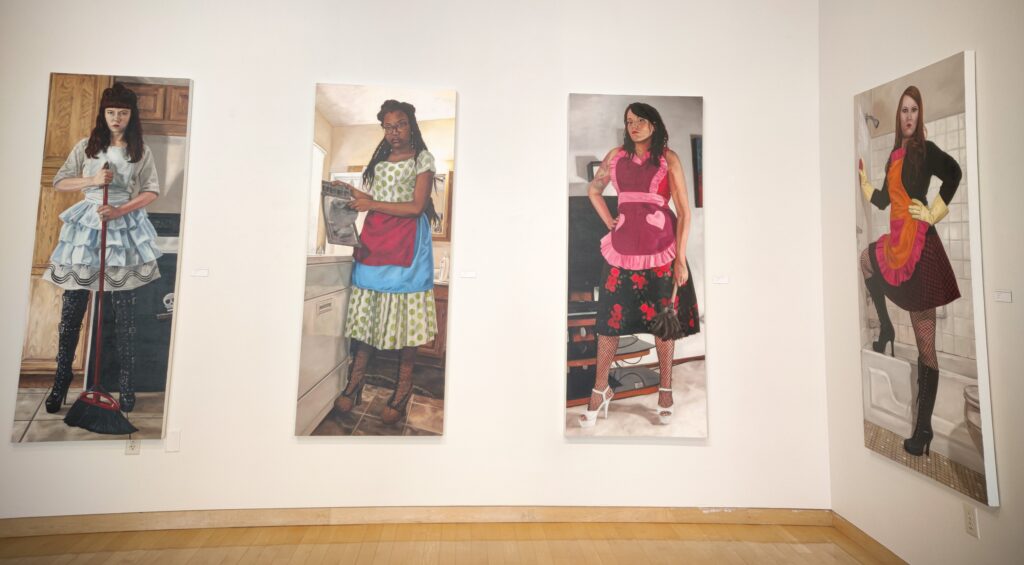Reimagining the feminine role in society is the goal of Klaire Lockheart, through her exhibit “Feminine Attempts.” Her portraits are the newest exhibit in Northwestern’s Te Paske Gallery. All of Lockheart’s art is driven by her desire to address gender identities and modern feminism in American culture, yet even in her most provocative art she adds a little humor. This exhibit is a parade of larger-than-life truths presented in way that her viewers can understand the depth of the issues presented.
The exhibit’s title, “Feminine Attempts,” explains the overall struggle that women face with norms. In the excerpt that introduces her pieces, she details that “from an early age, girls are inundated with rules and mores of what it means to be feminine, and they are expected to learn how to become women.”
There are 12 pieces in this series that depict women of various ages, social statuses, economic statuses and ethnicities. The women are life-sized and realistically painted to convey that these represent real people and real struggles. Even the scale of the paintings was purposeful to make them seem “monumental and intimidating, especially since they look down towards the viewer.”
Overall, Lockheart shared her commentary on the complex expectations that are pushed on women that end up conflicting with each other. For example, all the women are wearing modest clothing but have provocative heeled punk rock boots on to show the contrasting expectations to be sexy yet pure. Lockheart expertly showcases the contradictions that women face every day in a way that is easily understood by her viewers and still is in your face.
The scenes in the paintings portray all the women either helping with the children or doing house chores that are considered “dirty work.” In one painting titled, “Janelle Has It All,” it exaggerates the idea of being clean and looking good for one’s husband even if you are dealing with the back end of things all day. The mother in the painting is pictured throwing away a dirty diaper with a baby on her hip, wearing a lovely blue dress and pearls around her neck. Lockheart highlights the absurdity of the cleanliness ideal by exaggerating the expectations to get people’s attention. She also adds a little sarcasm through the title, with yes, Janelle has all the work and a lovely home to take care of, but she must fit in a box to have it all.
“Hallie Brings Home the Bacon,” a woman is making bacon in the kitchen while wearing a modest black dress with half an apron on, leading to the high leather black boots on her feet. The title of the piece gender swaps the old cliched saying that the men bring home the bacon, highlighting the fact that even though the men bring home the goods and things, the women are expected to prepare what they are given.
The faces of the women are all either frowning or outright scowling. Thought this image, Lockheart is throwing the idea that women should “smile more” into the wind. She does this with other seemingly harmless ideals. For example, the 1950s ads showed women wearing heels to communicate a desire for women to look a certain way while they are simply in the kitchen, and Lockheart shows all of her women wearing provocatively heeled shoes.
Lockheart’s desire to make her mark on the world of feminism is heard as she tries to defy the norms and “permits [her art] to share their displeasure about trying to fit in the role of femininity set by our culture.”
